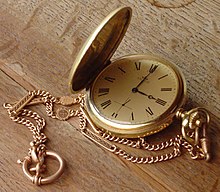HL7 Wiki
Àwọn àkóónú

Àsìkò tabi àkókò jẹ́ ìgbésẹ̀ ṣísẹ̀-n-tẹ̀lé tí kò ṣe é yí padà láti ìgbà tí a kò mọ̀ sí àsìkò tí a wà lọ́wọ́ tí yóò sì tún yí wọ ọjọ́ iwájú tí kò tíì dé.[1][2][3]
Bí a bá wo ṣàkun gbogbo ìtàn pátá, a ó ri wípé ipa pàtàkì ni àkókò tàbí àsìkò kó; yálà nínú ẹ̀sìn, ìròrí tàbí ìmọ̀ ọgbọ́n inú tí a ń pè ní sáyẹ́nsì. Agogo tàbí àsìkò ni wọ́n tún fi ń ṣòdiwọ̀n lọ́dọ̀ àwọn onímọ̀ tekinọ́lọ́jì, bákan náà ni àsìkò kíkà ṣe kókó nínú ètò ìrìnà ilẹ̀ àti ti òfurufú. Bákan náà ni àsìkò ṣe pàtàkì nínú àwùjọ pẹ̀lú bí wọ́n ṣe fi ń ṣòdiwọ̀n ọrọ̀-ajé; èyí ni ó mú àwọn ènìyàn sọ wípé (owó ni àsìkò). Àsìkò yí náà ni wọ́n fi ń ní ìmọ̀sìlára ìgbà, ọ̀jọ́ orí àti ọjọ́ ayé.
Oríkì àsìkò
Àsìkò túmọ̀ sí onírúurú ǹkan lọ́dọ̀ àwọn ènìyàn, bákan náà ni ó ní ìtumọ̀ oríṣiríṣi nínú iṣẹ́ kọ̀ọ̀kan. Èyí ni kòjẹ́ kí àwọn onímọ̀ lè sọ ní pàtó wípé báyìí ni àsìkò ṣe jẹ́ tàbí oríkì báyí ni ó tọ́ kí a fún àsìkò.[4][5][6] Bí ó tilẹ̀ jẹ́ wípé, agbọn ìmọ̀ eré ìdárayá, okòwò, iléṣẹ́ ńlá ńlá, sáyẹ́nsì tí ó fi mọ́ àwọn eléré ìtàgé ni wọ́n kò lè koyán àsìkò kéré.[7][8][9] Tí a bá wá ní kí a fún àsìkò ní oríkì kan, a ní láti ṣàkíyèsí: ìwòye ojú ọjọ́, yálà Òòrùn tàbí òṣùpá àti lílọ-bíbọ̀ sánmọ̀.
Itokasi
- ↑
"Oxford Dictionaries:Time". Oxford University Press. 2011. Archived from the original on 4 July 2012. Retrieved 18 May 2017.
The indefinite continued progress of existence and events in the past, present, and future regarded as a whole
Unknown parameter|url-status=ignored (help) - ↑ Àṣìṣe ìtọ́kasí: Invalid
<ref>tag; no text was provided for refs namedDefRefs02 - ↑ "Time". The American Heritage Dictionary of the English Language. 2011. http://ahdictionary.com/word/search.html?q=time. "A nonspatial continuum in which events occur in apparently irreversible succession from the past through the present to the future."
- ↑ Àṣìṣe ìtọ́kasí: Invalid
<ref>tag; no text was provided for refs namedPoidevin - ↑ Carroll, Sean M. (2009). "From Eternity to Here: The Quest for the Ultimate Theory of Time". Physics Today (Dutton) 63 (4): 54–55. Bibcode 2010PhT....63d..54C. doi:10.1063/1.3397046. ISBN 978-0-525-95133-9.
- ↑ "The Feynman Lectures on Physics Vol. I Ch. 5: Time and Distance". www.feynmanlectures.caltech.edu. Retrieved 2023-12-15.
- ↑ "Official Baseball Rules - 8.03 and 8.04" (PDF). Major League Baseball. 2011. Archived from the original (Free PDF download) on 1 July 2017. Retrieved 18 May 2017.
Rule 8.03 Such preparatory pitches shall not consume more than one minute of time...Rule 8.04 When the bases are unoccupied, the pitcher shall deliver the ball to the batter within 12 seconds...The 12-second timing starts when the pitcher is in possession of the ball and the batter is in the box, alert to the pitcher. The timing stops when the pitcher releases the ball.
Unknown parameter|url-status=ignored (help) - ↑ "Guinness Book of Baseball World Records". Guinness World Records, Ltd. Archived from the original on 6 June 2012. Retrieved 7 July 2012.
The record for the fastest time for circling the bases is 13.3 seconds, set by Evar Swanson at Columbus, Ohio in 1932...The greatest reliably recorded speed at which a baseball has been pitched is 100.9 mph by Lynn Nolan Ryan (California Angels) at Anaheim Stadium in California on 20 August 1974.
Unknown parameter|url-status=ignored (help) - ↑ Zeigler, Kenneth (2008). Getting organized at work : 24 lessons to set goals, establish priorities, and manage your time. McGraw-Hill. ISBN 978-0-07-159138-6. https://books.google.com/books?id=acPPD6lCCxcC. Retrieved 30 July 2019. 108 pages.

















